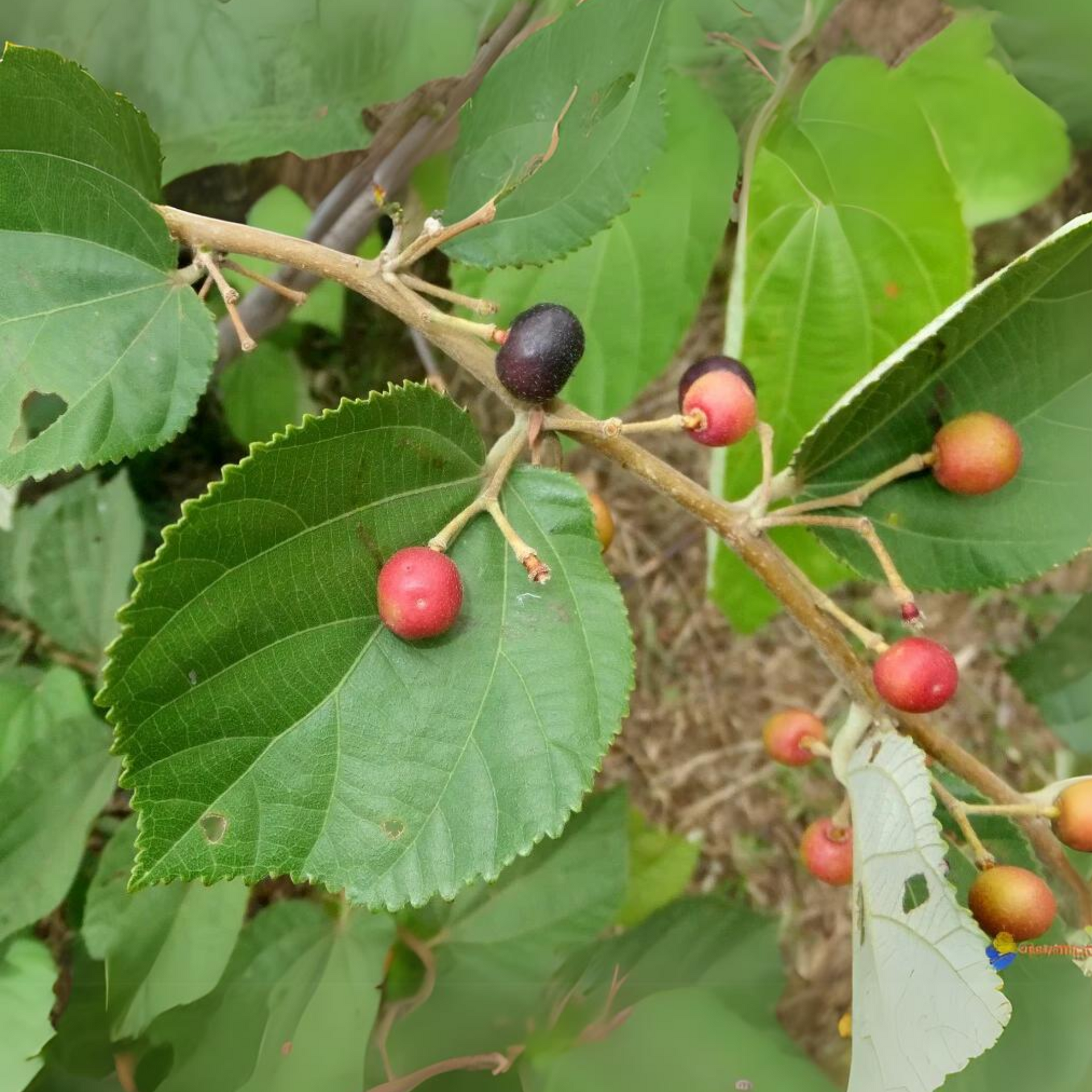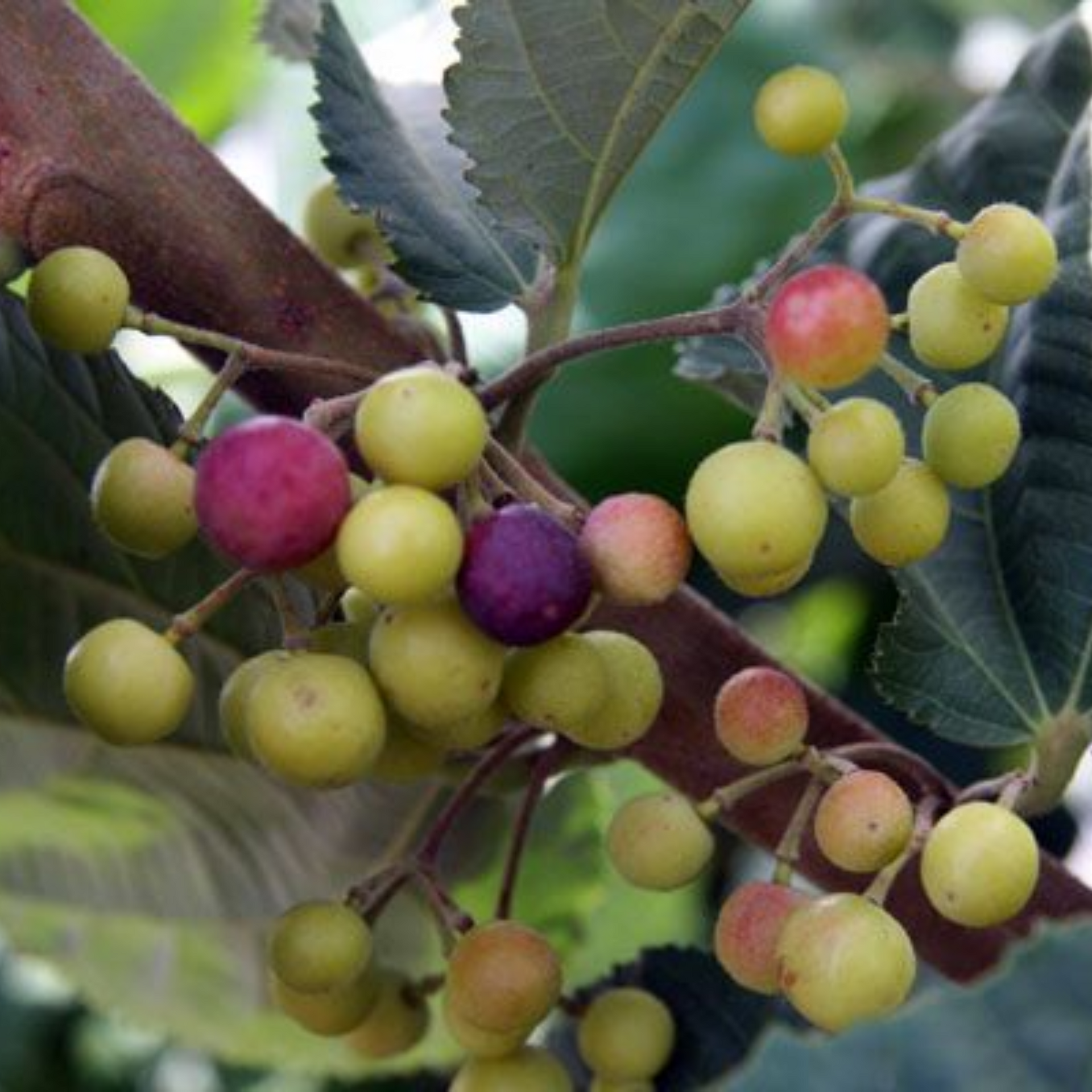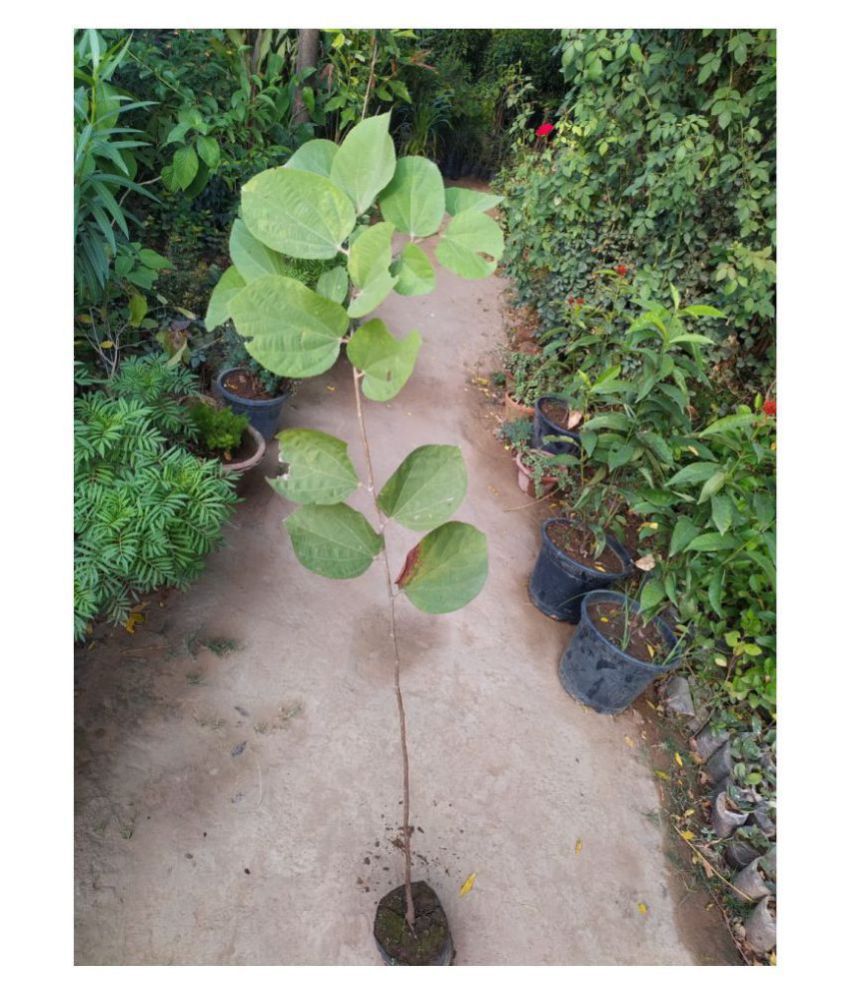



Green Paradise Offers Healthy Falsa Berry Plant
About Falsa Berry Plant
Falsa berry, also known as Phalsa or Indian Sherbet Berry, is the fruit of the Grewia asiatica plant. It is a small, purple to blackish-purple, round fruit that grows in clusters on deciduous shrubs or small trees. The plant is native to South Asia, including India, Pakistan, and Bangladesh, as well as some Southeast Asian countries like Myanmar.
Here are some key characteristics and information about the Falsa berry plant:
Plant Description:
The Grewia asiatica plant is a medium-sized shrub or small tree, typically reaching a height of 3 to 5 meters (10 to 16 feet). It belongs to the Malvaceae family, which also includes hibiscus and okra. The leaves of the plant are dark green and have serrated edges.
Fruit:
The Falsa berries are small, approximately 1-1.5 cm (0.4-0.6 inches) in diameter, and have thin, slightly rough skin. The berries have a sweet and tangy flavor, similar to a combination of blackcurrant and cranberry. They contain several small seeds, making them crunchy when eaten.
Season:
The fruiting season for Falsa berries typically falls in the summer months, between May and July.
Culinary Uses:
Falsa berries are commonly eaten fresh, often sprinkled with salt, sugar, or a mixture of spices to enhance their taste. They are also used to make refreshing drinks, sherbets, sorbets, and desserts. Additionally, the fruit is sometimes used in jams and jellies.
Medicinal Uses:
In traditional medicine, various parts of the Falsa plant, including the leaves, bark, and fruit, are believed to possess medicinal properties. They are used to treat various health conditions, such as diarrhea, dysentery, fever, and respiratory problems.
Nutritional Value:
Falsa berries are a good source of antioxidants, vitamin C, and minerals like calcium and phosphorus. They are low in calories and provide some dietary fiber.
Growing Conditions:
The Falsa berry plant thrives in tropical and subtropical climates. It prefers well-drained soils and full sunlight but can tolerate partial shade. The plant is relatively drought-resistant, making it suitable for arid regions.
Propagation:
The Falsa berry plant can be propagated from seeds or cuttings. It is relatively easy to grow and can be cultivated in gardens or as a potted plant.
Falsa berries are not as widely known as some other berries, but they hold cultural significance in South Asian cuisine and traditional medicine. If you have access to these berries, they are definitely worth trying for their unique flavor and potential health benefits.
How To Grow Falsa Berry Plant
Growing a Falsa berry plant can be a rewarding experience, as it produces delicious and healthy fruits. Falsa, also known as Grewia asiatica or Phalsa, is a tropical fruit native to South Asia.
Here's a step-by-step guide on how to grow & Care Falsa berry plants:
Climate and Soil Requirements:
Falsa plants thrive in warm tropical or subtropical climates with temperatures between 20°C to 35°C (68°F to 95°F).
They prefer soil that drains well and is rich in organic materials. The soil pH should be slightly acidic to neutral, around6.0 to7.5.
Planting:
Choose a sunny location with well-draining soil. Depending on the specific berry plant, it may have specific soil pH requirements, so check for those guidelines. Plant during the appropriate season for your region.
Planting Falsa Berry Seeds:
Obtain Falsa berry seeds from a reputable source or collect them from ripe fruits.
Soak the seeds in water for about 24 hours before planting to improve germination rates.
Fill small pots or seed trays with a well-draining potting mix and plant the soaked seeds about 1 cm (0.4 inches) deep.
Maintain damp but not sopping wet soil.
Place the pots in a warm and sunny location, such as a windowsill or greenhouse.
Transplanting Seedlings:
Once the seedlings have grown to about 6-8 inches in height and have developed a few sets of leaves, they can be transplanted into larger containers or directly into the ground.
If transplanting outdoors, ensure the danger of frost has passed, and the soil has warmed up adequately.
Spacing:
If planting multiple Falsa berry plants, space them about 6 to 10 feet apart to give each plant enough room to grow and spread.
Watering:
Falsa plants require regular watering, especially during dry spells. Ensure the soil remains consistently moist but avoid waterlogging, as it can lead to root rot. Falsa berry plants prefer consistent moisture but do not like to sit in waterlogged soil. Water regularly, especially during dry spells, and mulch around the factory to help retain humidity.
Fertilization:
Falsa plants benefit from regular feeding with a balanced fertilizer. Use a fertilizer with a ratio of 10-10-10 or 14-14-14, and apply it according to the manufacturer's instructions. Falsa Berry plants generally benefit from a balanced fertilizer formulated for fruiting plants. Follow the manufacturer's instructions and avoid over-fertilization, as excessive nitrogen can lead to more foliage growth at the expense of fruit production.
Pruning:
Prune the Falsa plant regularly to maintain its shape and promote better fruiting. To keep the factory healthy, remove any dead or diseased branches. Regular pruning is essential for berry plants to maintain their shape, promote airflow, and remove dead or diseased branches. Different berry plants have specific pruning requirements, so research the particular species you have for the best approach.
Pest and Disease Management:
Keep an eye out for common pests like aphids, spider diminutives, and fruit canvases Use appropriate organic insecticides or neem oil to control infestations.
Falsa plants can be susceptible to fungal diseases in humid conditions. Ensure good air circulation around the plant and avoid overwatering to minimize the risk.
Keep an eye out for pests and diseases common to the specific berry plant you have. Use appropriate and safe methods to manage these issues.
Harvesting Falsa Berries:
Falsa berries ripen about 75-90 days after flowering. They are usually dark purple to black when ripe.
Harvest the fruits by gently plucking them from the plant when they are fully ripe. They should easily separate from the stem. Harvest berries when they are fully ripe. This time varies depending on the berry type. Be gentle when picking to avoid damaging the factory.
Remember that growing plants can be an experiment, and factors like local climate and conditions may influence the success of your Falsa berry plant. Be patient and attentive to your plant's needs, and you'll likely enjoy a bountiful harvest of delicious Falsa berries.




